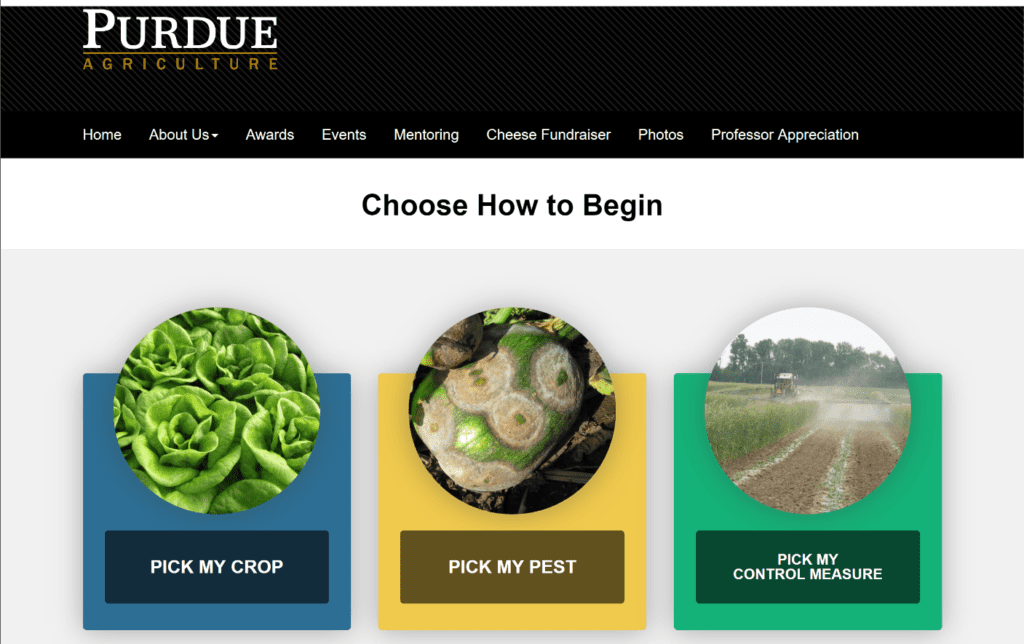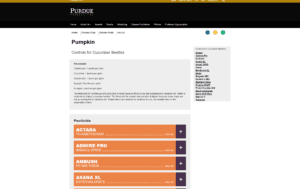

Aug 26, 2019Midwest Veg Guide to be offered in digital format
The 2020 Midwest Vegetable Production Guide for Commercial Growers will have an updated online component this year, and is slated for release in December 2019.
Currently, the guide can be viewed online at www.mwveguide.org as a pdf. The updated website will allow for specific crop, pest and control selections.
In 2015, Michigan State University educators polled vegetable and fruit growers at winter meetings, and also conducted an internal survey among fruit and vegetable Extension staff. In this survey, internet connectivity was determined to be consistent and fast for a digital resource for just under half of the respondents, and a selection of important pesticide criteria was identified. Over 50% of growers wanted the ability to search by both single pests and crops and multiple pests and crops, and to get information on application rates, preharvest intervals (PHI), re-entry intervals (REI), mode of action codes, and restricted use pesticide (RUP) status.
In the spring of 2017, Ben Phillips of MSU, and Dan Egel of Purdue University, polled the Great Lakes Vegetable Working Group (GLVWG) about improving the online version of the Midwest Vegetable Production Guide for Commercial Growers (mwveguide.org), which is co-authored and edited by many members of GLVWG. In this survey, 90% of the respondents indicated that they valued the Midwest Vegetable Production Guide and were supportive to changes to the website, and some provided suggestions for new web functionality.


Some suggestions were to make it useable on all types of screens, to include multiple user tracks, and include information on greenhouse use, organic-approved (OMRI) and pollinator protection labeling. An important feature for authors and editors was the ability to use the data framework to display the information online for on-the-fly updates, and also to output a typeset document for the annual printed guide. So, we would essentially be editing one thing and getting three outputs: an online searchable database, the ability to print specific controls for different pest and crop selections and an annually printed guide with everything in it.
With these ideas, we identified a programmer in Indiana to help build a relational database that contains the recommendations in the Midwest Vegetable Production Guide, and host it on Purdue web space for free access by growers in a format that is friendly to all devices and computers.
We designed three user tracks for approaching the tool, assuming that the grower already knows what their problem is.
- A grower can identify one crop, then choose multiple pests to see what control measures or pesticides they can use on those pests for that crop, similar to how the printed guide is formatted right now.
- A grower can identify one pest, then choose multiple crops to see what control measures or pesticides they can use across multiple crops for the control of one pest, which can help growers make effective and economical pesticide selections that can spread the cost of a control across multiple crops.
- A grower can identify one control measure or pesticide, then choose multiple crops to see all the pests and crops that it can be used on. The last option is one that growers can use if they’ve already got product in the shed and would like to quickly see what it is effective on.
The user will then see a list of controls in alphabetical order with their chemical name and mode of action. Clicking on a control will expand it to see the rate, application notes, herbicide timing, PHI, REI, RUP and OMRI status. This can be even further expanded to review respirator use, greenhouse use, chemigation use and pollinator protection information. Emergency Section 18, and 24(c) special local needs pesticides are also included. The group’s philosophy on pesticide recommendations remains the same in that all pests that appear on a label will not always appear as recommendations.
The project was made possible by North Central Integrated Pest Management Center, sponsored by the USDA National Institute of Food and Agriculture in addition to generous contributions from state grower associations from Michigan, Indiana and Kansas.
– Ben Phillips, Michigan State University, and Dan Egel, Purdue University














